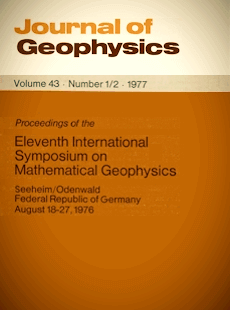Observation of PS reflections from the Moho
Article Sidebar

Vols. 1-18 (1924-1944), ISSN 0044-2801
Main Article Content
Abstract
Fuchs (1975) has described the theory and computation of synthetic seismograms for PS reflections from first order discontinuities and transition zones with various properties. A number of record sections were shown in which PS reflections were not discernable. In the course of a programme of explosion work which has been carried out around Scotland (SOSP, outlined by Jacob, 1974) a line of shots fired in the North Minch was observed by a station, WR, situated at Cape Wrath (Fig. 1). Though sub-critical PmP Moho reflections were seen, which indicated that PS reflections from the Moho might be expected, a section of vertical component seismograms (Fig. 2) gave only a weak indication of the phase. However, further processing of the data has shown a clear PS Moho reflection to be present.
 ARK: https://n2t.net/ark:/88439/y012585
ARK: https://n2t.net/ark:/88439/y012585
Permalink: https://geophysicsjournal.com/article/273
Article Details
References
Fuchs, K. (1975) Synthetic seismograms of PS-reflections from transition Zones computed with the reflectivity method. J. Geophys. 41:445-462
Jacob, A.W.B. (1974) The Scottish seismic refraction programme. Proc XIII General Assembly E.S.C., Brazov, Part II:325-329
Kaminski, W., Bamford, D., Faber, S., Jacob, B., Nunn, K., Prodehl, C. (1976) A lithospheric seismic profile in Britain - II. Preliminary report on the recording of a local earthquake. J. Geophys.
42:103-110
Meissner, R. (1965) P and SV Waves from uphole shooting. Geophys. Prospect. 13:443-459
Nuttli, O. (1961) The effect of the Earth's surface on the S wave particle motion. Bull. Seism. Soc. Am. 51:237-246
Smith, P.J., Bott, M.H.P. (1975) Structure of the crust beneath the Caledonian Foreland and Caledonian Belt of the North Scottish shelf region. Geohys. J. 40:187-205











